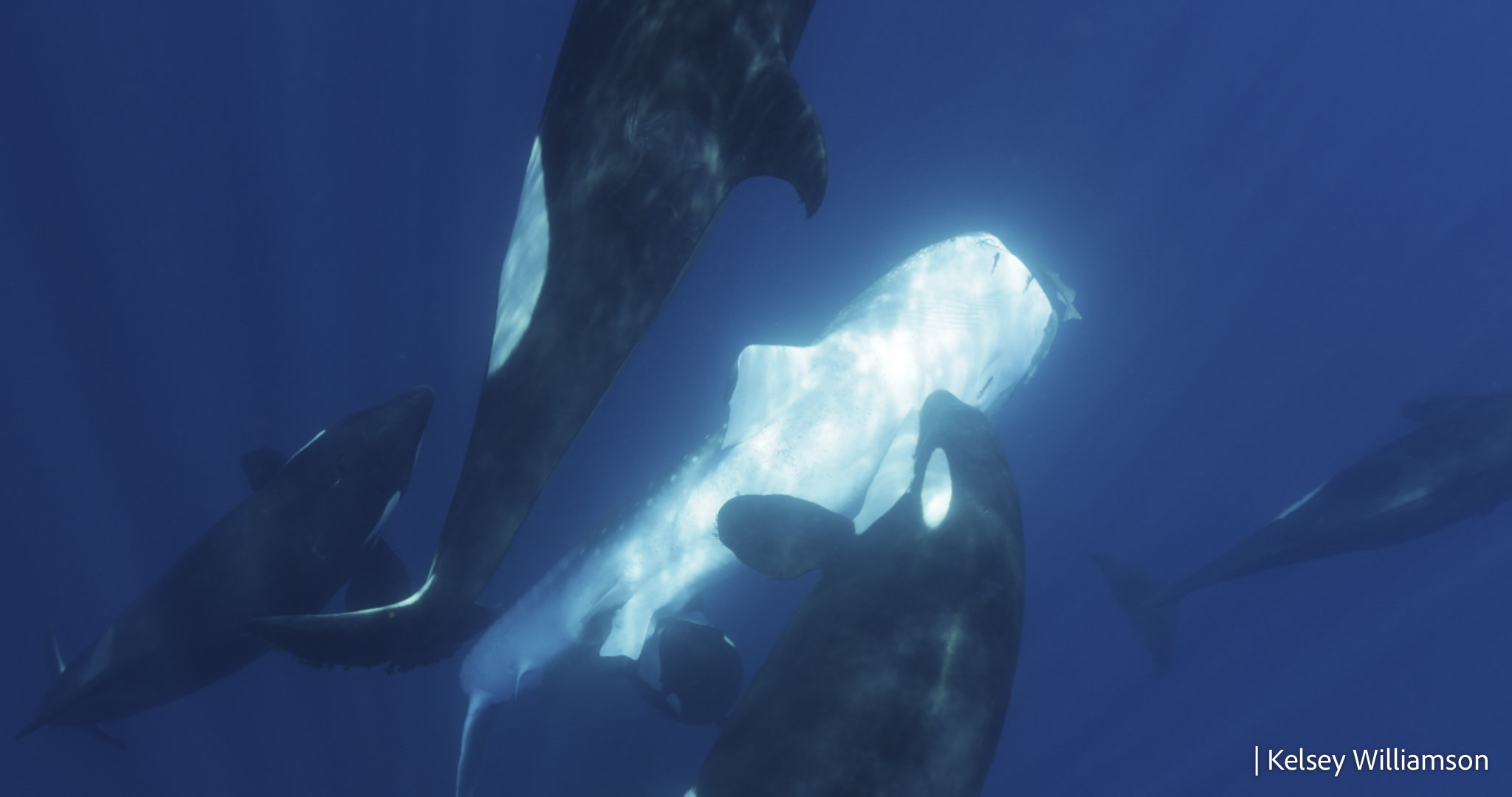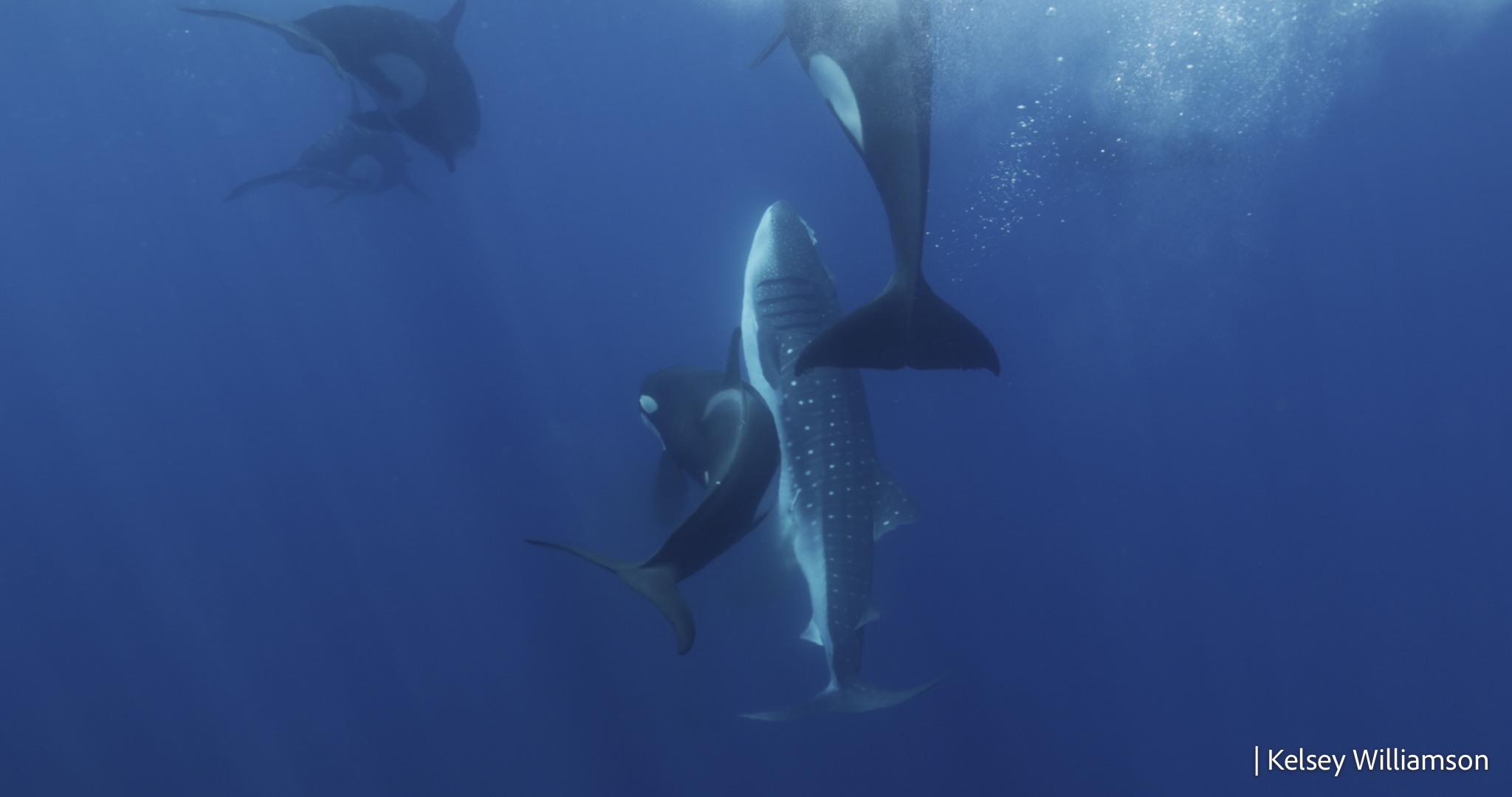Orcas have been up to all sorts of things in 2024 – from sinking boats to reinstating fashion trends, these super-intelligent marine predators often make the news. While they have been up to some more wholesome antics, they are still capable of predatory behavior, and this latest report suggests they have turned their attention to whale sharks.
Whale sharks (Rhincodon typus) are the world’s largest fish and can grow to around 18 meters (59 feet) long. Juveniles are known to gather in the rich feeding ground of the Gulf of California when the plankton levels are particularly high. Whale sharks are filter feeders – despite their gigantic size, only eat small fish, tiny crustaceans, and plankton that they sieve out of the water with filtering pads inside their mouths.
Orcas are apex marine predators, found in all the oceans of the world. With their high levels of intelligence and cooperative hunting behaviors, they are able to consume a wide-ranging diet that includes seals, sea turtles, cephalopods, and sharks and other fish. Now, it seems they’ve added whale sharks to the menu.
Researchers suggest that there is a group of whale sharks in the southern Gulf of California that target sharks and rays for their prey, including Munk’s pygmy devil rays (Mobula munkiana), mackerel sharks, and requiem sharks. This group of orcas in the southern Gulf of California has been seen by researchers and members of the public to be predating whale sharks in four separate events over a six-year period from 2018-2024. Videos and photographs shared by tourists can even allow the team to see the behaviors in more detail, and identify the individual orcas involved by scars and distinctive markings.

“Attacking the pelvic area causing the whale shark to bleed out and allow orcas access to the lipid-rich liver”
Image Credit: Kelsey Williamson
In four out of the three whale shark predation events, a male orca known as Moctezuma – observed since 1992 – was present during the hunting. In the other whale shark attack, a female previously seen with Moctezuma was involved. The orcas appear to have developed a special hunting technique to prey on the whale sharks.
“According to the events, killer whales displayed a cooperative and coordinate hunting behavior which included repeatedly hitting the whale shark at high speed to stun and immobilize it, manipulate and positioning the shark ventral side up and biting the shark in the exposed ventral region, to exsanguinate the shark through the cloaca and allow access to the organs for consumption.” write the authors.
The orcas focus on attacking the pelvic area, which drains the whale shark of blood. The team believes that this allows the orca access to the liver, which contains a high concentration of fats and a high calorific content. It also comprises the majority of a whale shark’s body weight. Orcas have been previously filmed hunting great white sharks for access to their livers, though direct images or footage of orcas consuming the livers was not seen for the whale sharks.
“We show how orcas displayed a collaboratively hunting technique on whale sharks, characterized by focusing on attacking the pelvic area causing the whale shark to bleed out and allowing orcas access to the lipid-rich liver,” said Erick Higuera Rivas, a marine biologist at Conexiones Terramar and senior author of the paper, in a statement.
It is thought that the whales attack the underside of the whale sharks because there is less muscle and cartilage to go through. This is especially true in the juveniles these orcas are hunting, as the connective tissues are far thinner than in adults. The team thinks that this implies that these orcas have acquired skills to make them better at targeting whale sharks.

Killer whales come up to the surface to breathe before heading back down to the whale shark.
Image Credit: Kelsey Williamson
“When hunting, all pod members work together, hitting the whale shark to turn it upside down. In that position the sharks enter a state of tonic immobility and can no longer move voluntarily or escape by going deeper,” Higuera Rivas explained. “By keeping it under control, the orcas then have greater ease and speed in approaching the pelvic area of the shark and are able to extract organs of nutritional importance for them.”
While this is no doubt a horrible death for the whale sharks, it highlights the incredible intelligence and hunting behaviors of the orcas. The team suggests that this research has several implications, especially related to the tourism draw that whale sharks bring in. The team also highlighted that depending on whale sharks for a food source might disadvantage the orcas given that whale sharks could disappear from the region due to climate change and their own vulnerability. Whale sharks are listed as Endangered by the IUCN.
“It is very impressive how orcas work together strategically and intelligently to access only a very specific area of the prey. It highlights what great predators they are,” concluded Higuera Rivas.
The paper is published in the journal Frontiers in Marine Science.
Source Link: World’s Largest Fish Flipped And Drained Of Blood By Specialist Shark-Hunting Orcas